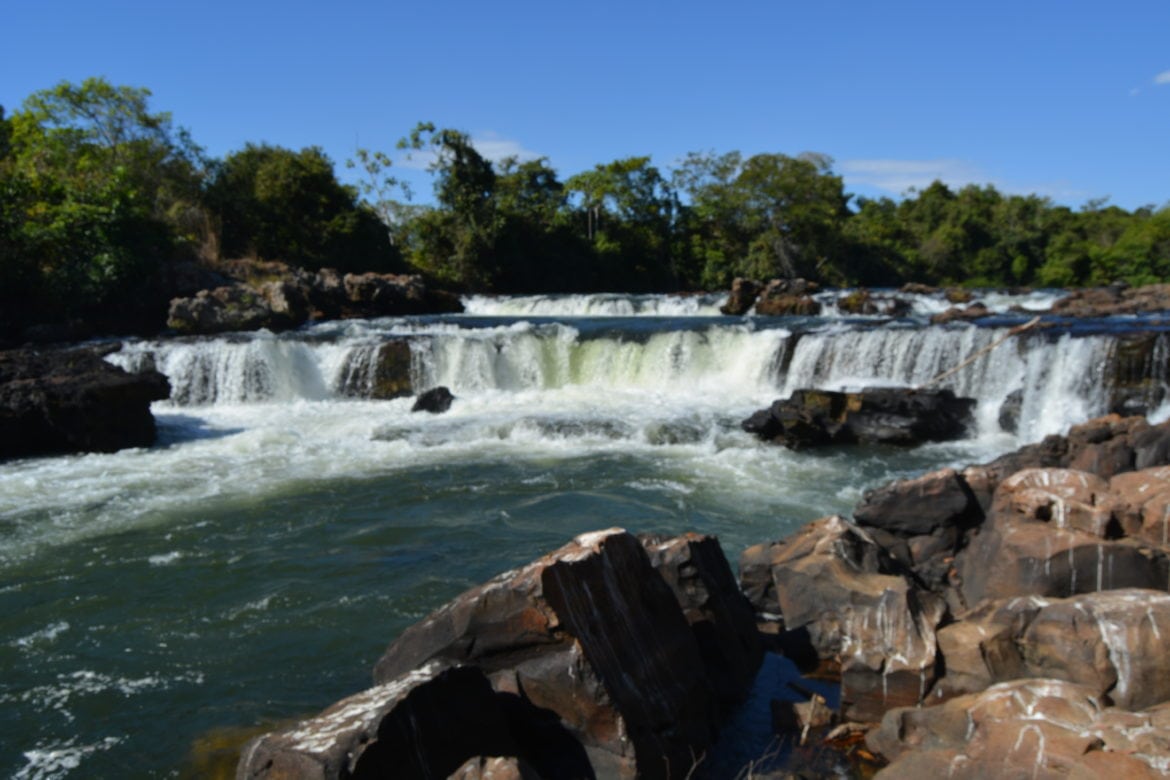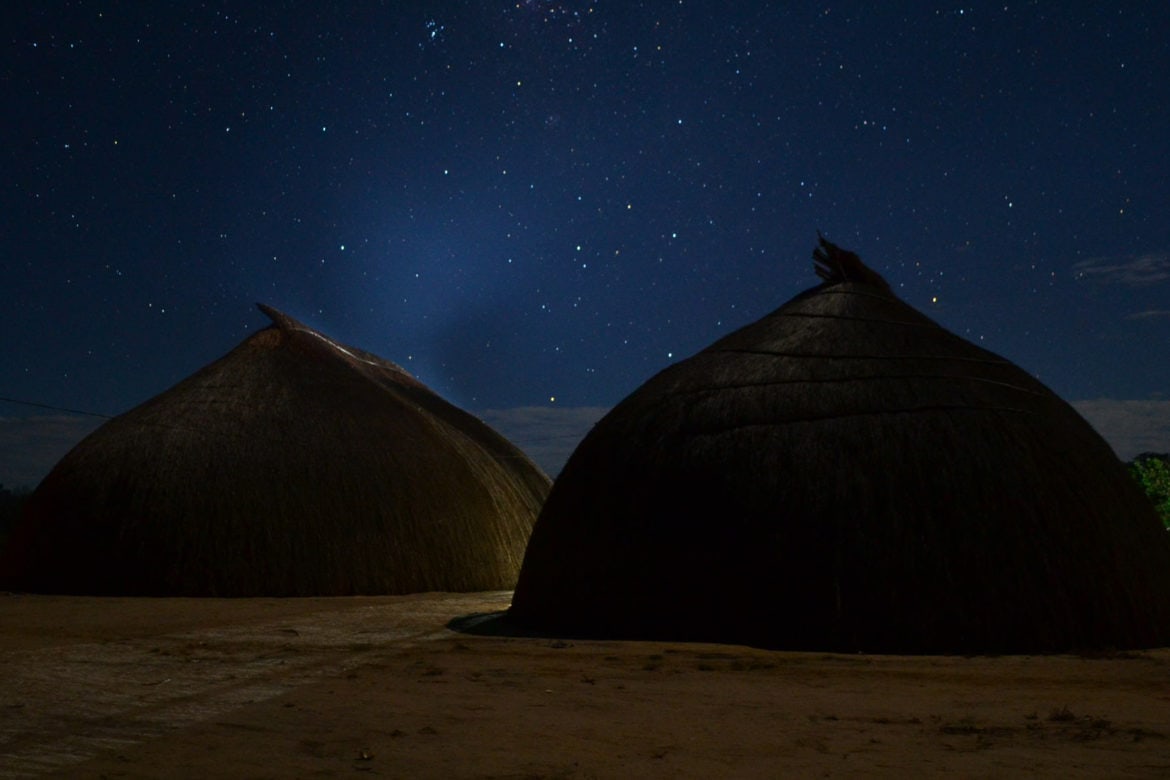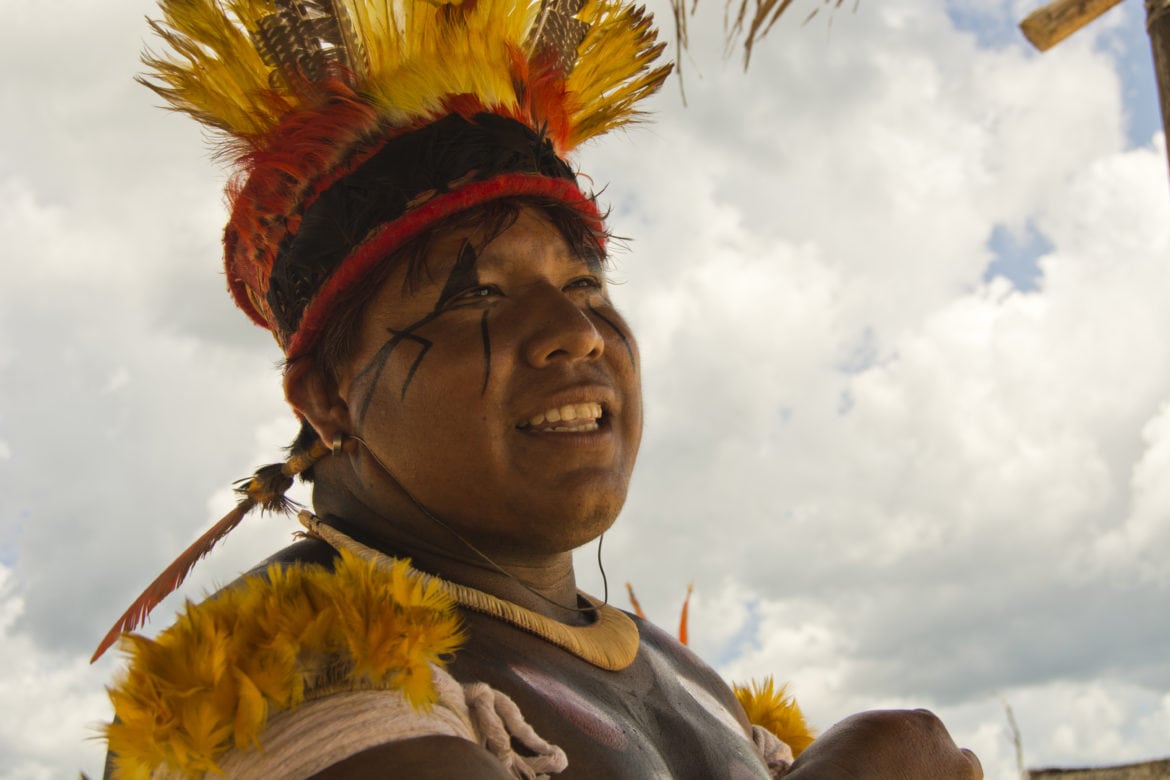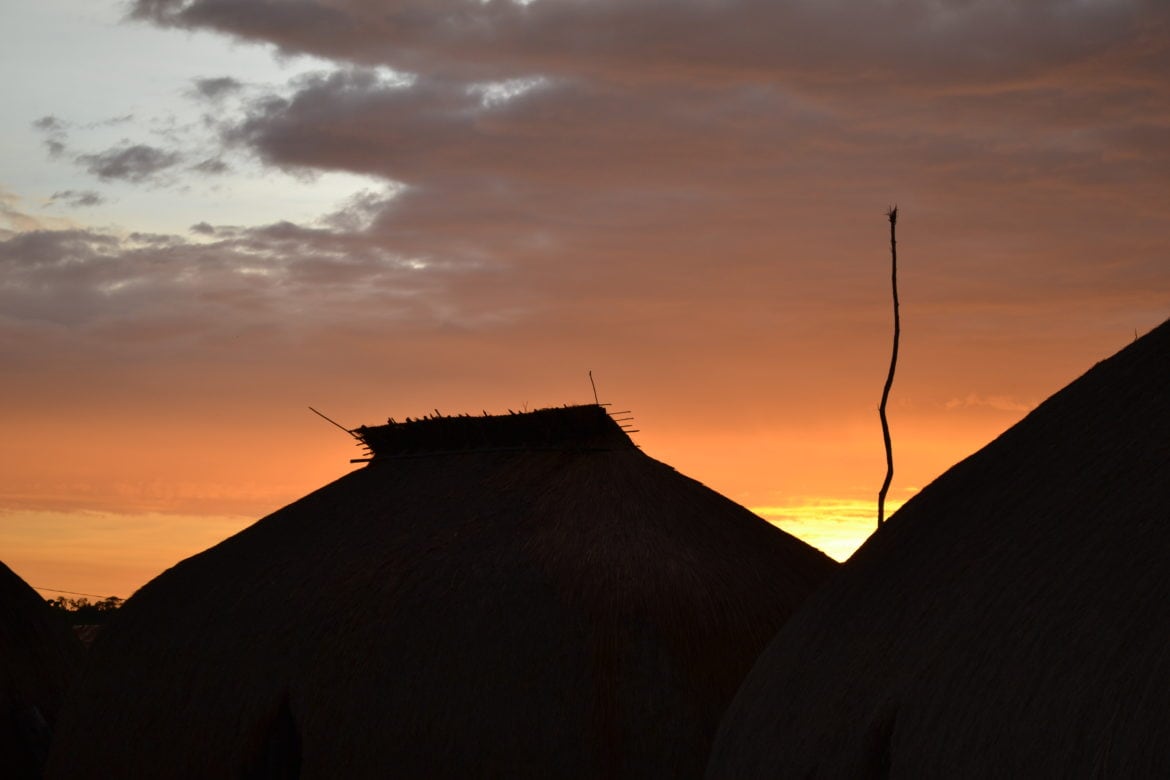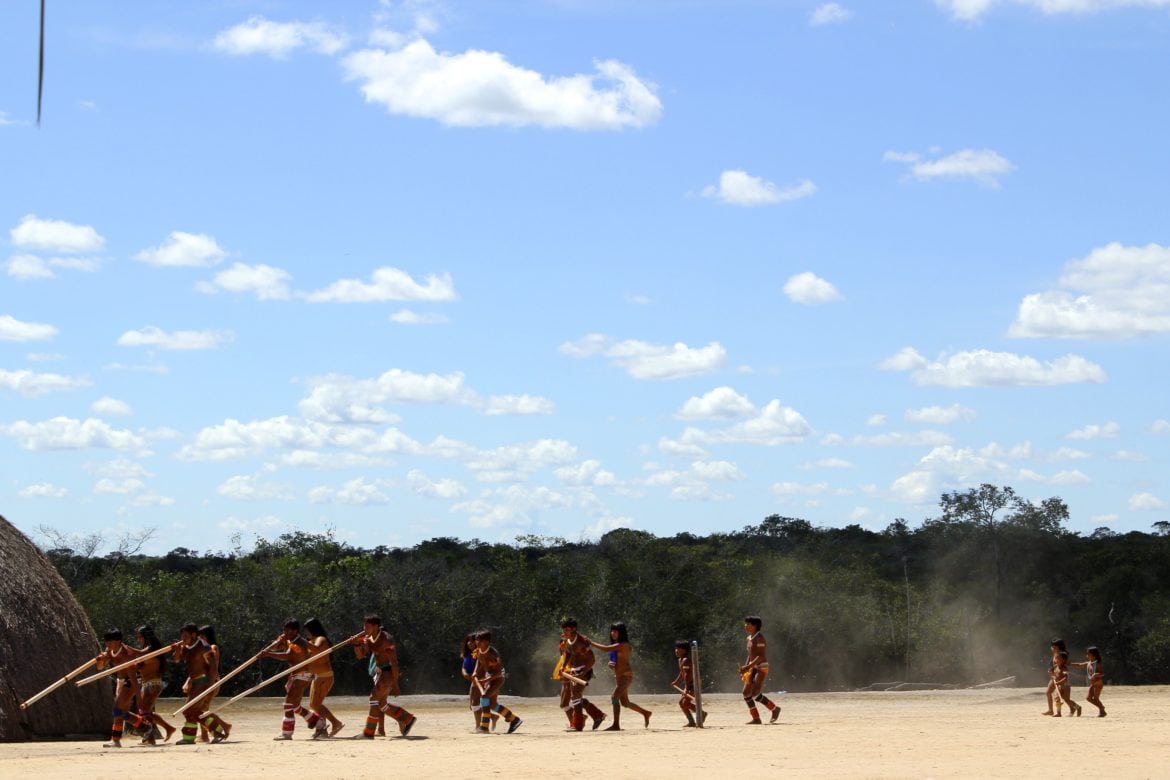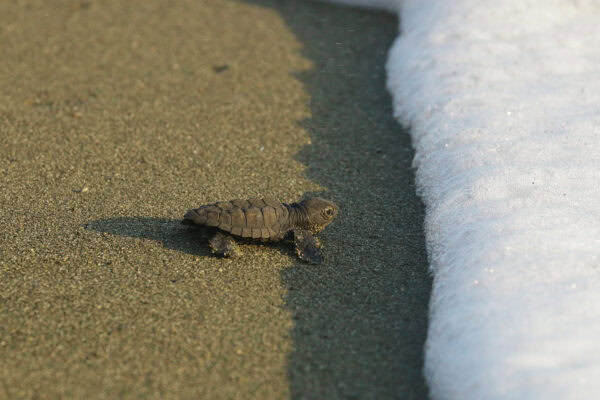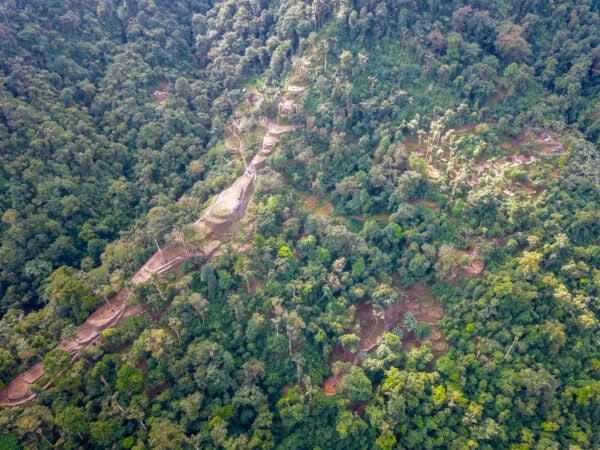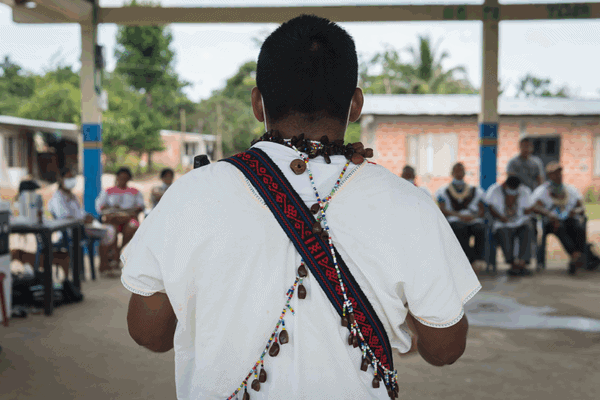The Waurá, our indigenous partners in Brazil, asked for our support to protect the Kamukuaká Cave. This cave is profoundly sacred to the Waurá. For thousands – yes, thousands – of years, they have traveled to the cave to partake in deep ceremonies that connect them to their ancestors, their spirits, the natural world, and to each other.
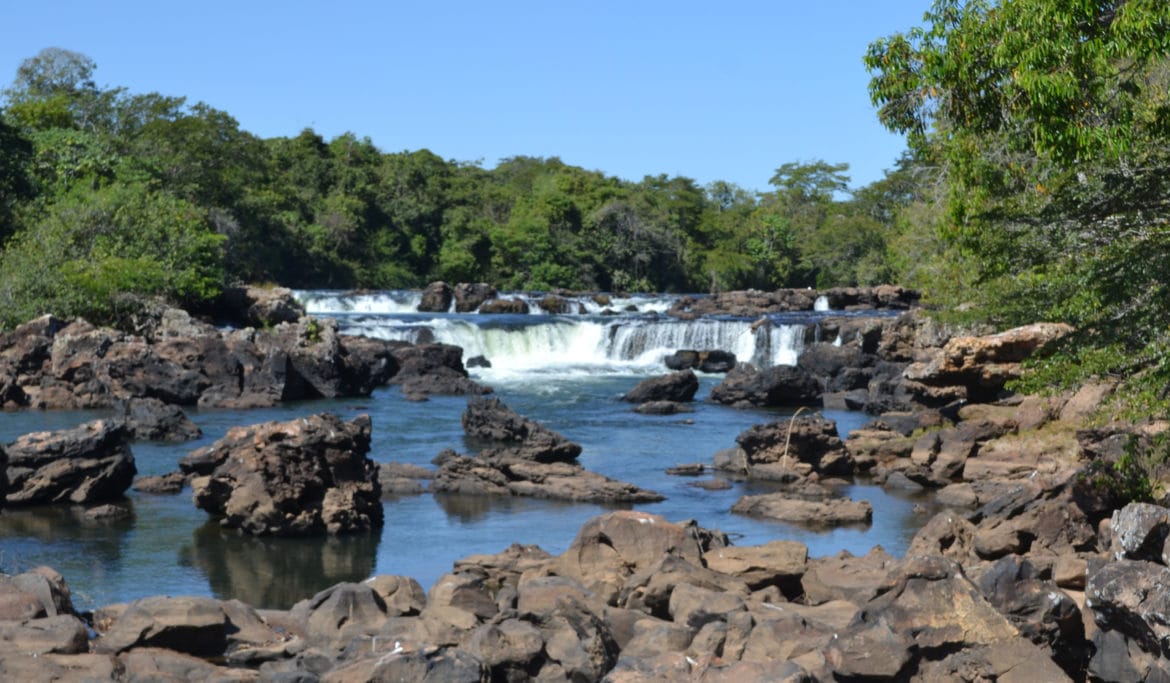
Cataracts at the sacred site of Kamukuaká 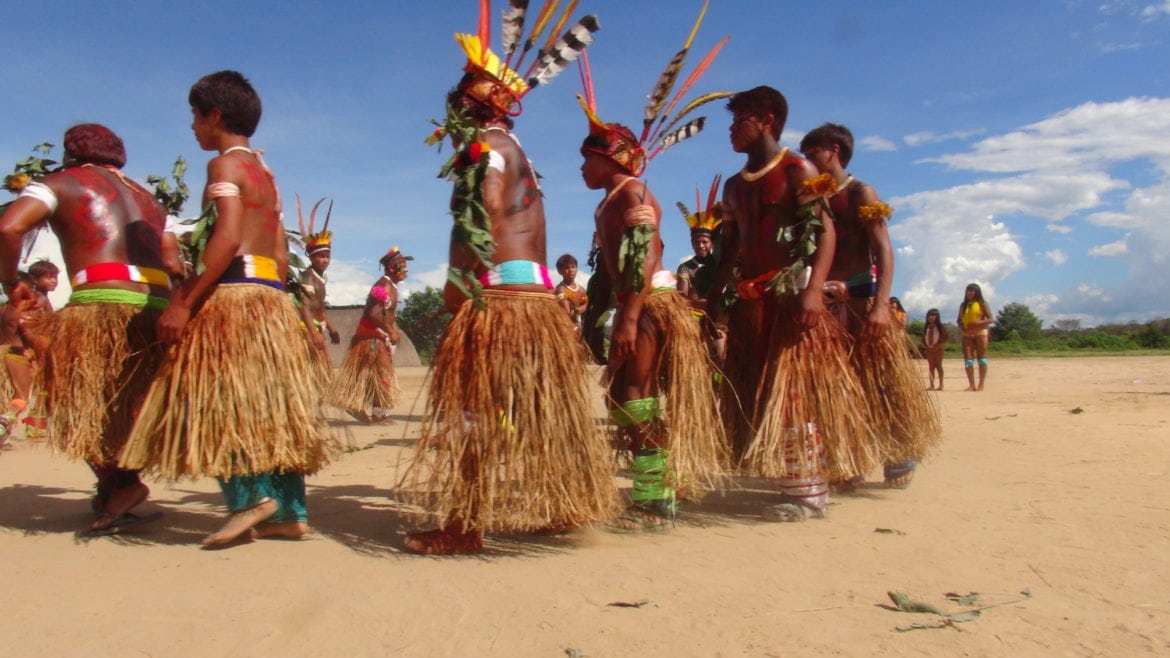
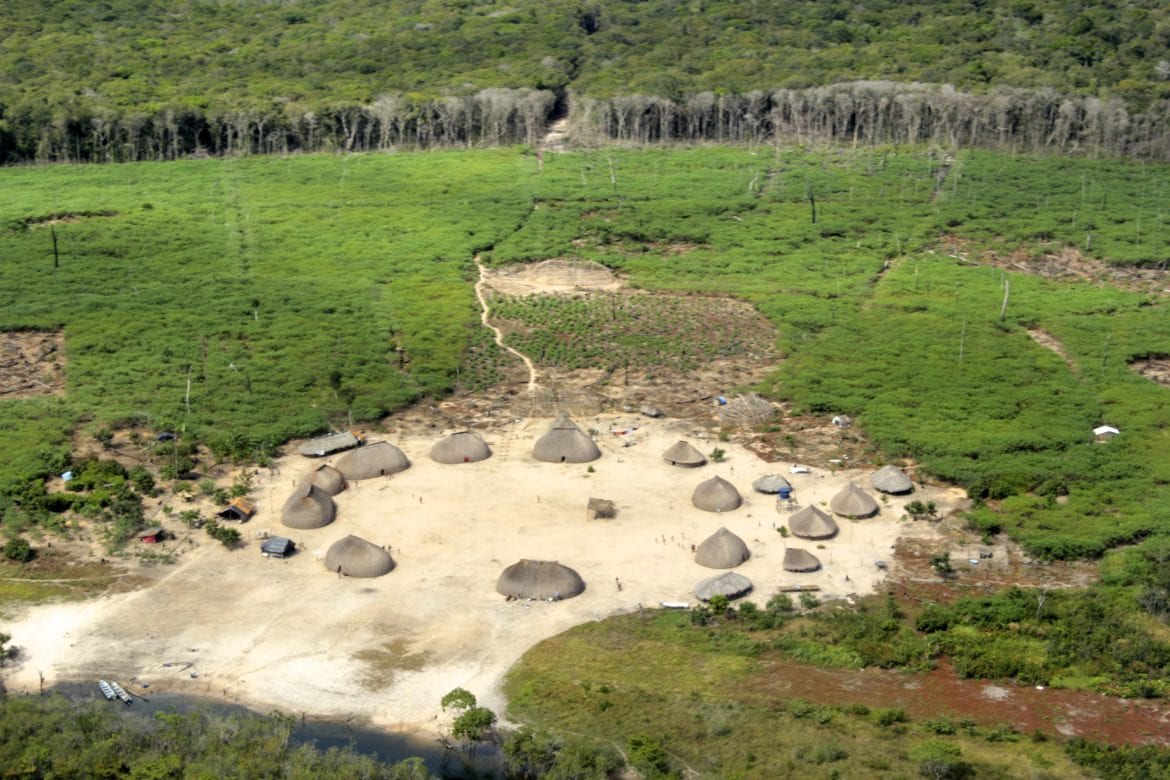
Ulupuene 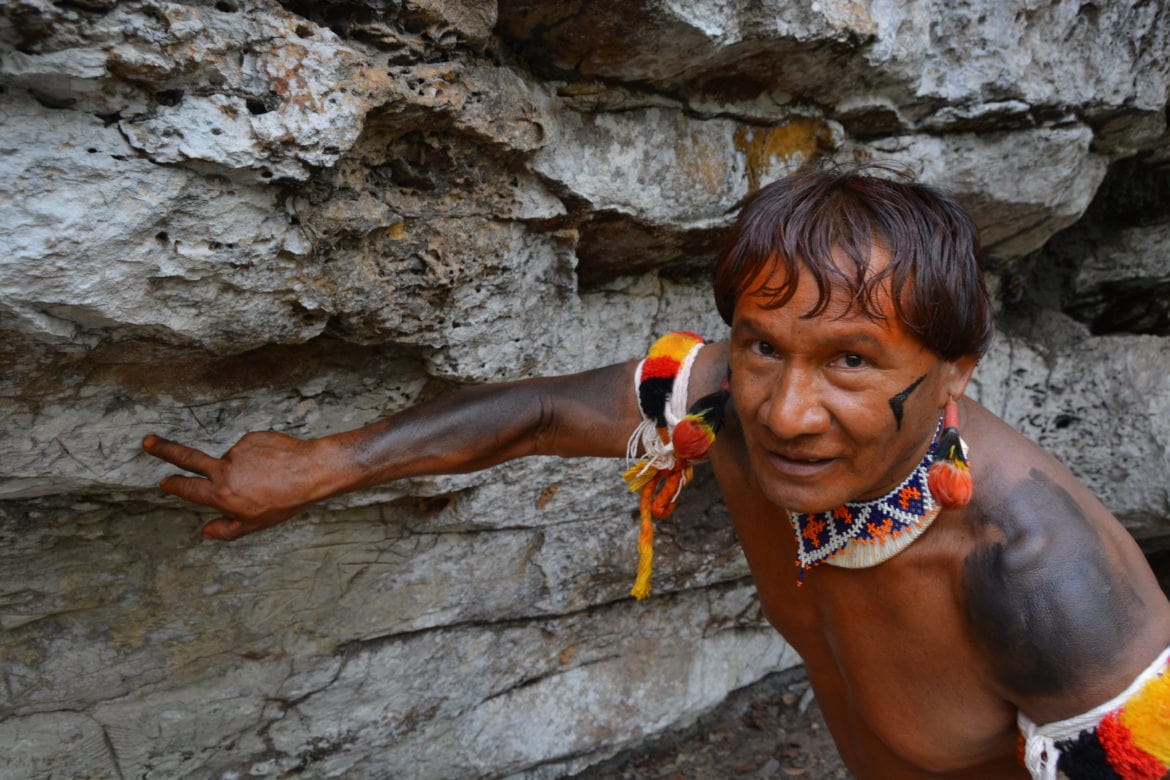
Eleukah Waurá, Shaman and Chief of the village of Ulupuene
Once upon a time the cave was far from their villages but still part of Waurá territory. Forces of “development” have gnawed away at their lands, and Kamukuaká is now part of an immense private soy farm. When they try to visit their most sacred site, the Waurá are considered trespassers.
The Waurá, led by the shaman Eleukah, took me to visit this cave. It was a long journey by truck, over rutted roads baked by the hot equatorial sun. Not long ago we would have traveled through savanna and rain forests. Now, the forests were gone, replaced by massive monocultures. Giant blocks of green soy fields were interspersed with equally gigantic blocks of completely bare red clay, like an infernal checkerboard.
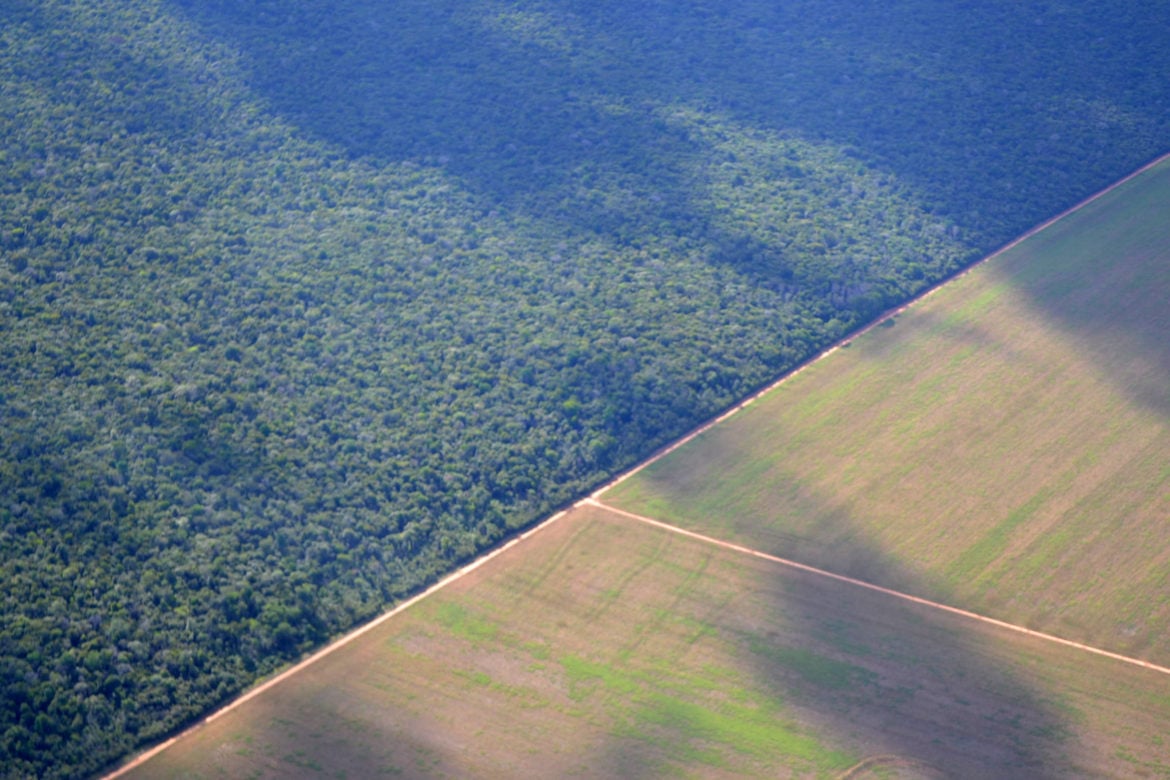
An indecipherable labyrinth of gated roads twisted through this ravaged landscape. We saw no birds, no insects. We could hear only the incessant whining of outsized farm machines, which threw clouds of dust behind them as they crawled through the fields. The atmosphere was uncomfortably parched. The only water we could see was pooled in the oil-slicked tire tracks gouged out by the monstrous machinery. The stench of chemicals permeated the cab of the truck and my nose began to bleed.
I remembered how Mark (president and co-founder of the Amazon Conservation Team) described Rondônia, in the western Amazon, on a visit a few years back. The air was choked from fires, the smoke so thick that planes could not take off or land. The rivers had dried up, stranding fish in puddles of ever decreasing size until they died and rotted in great stinking heaps. All night long, the horizon glowed a lurid color of red. It was like being in hell, Mark said. So too was my nightmarish journey through the soy fields. My companions and I did not speak, each trapped in our own thoughts as we traveled this industrial dystopia.
After hours in the old truck, we arrived at the mouth of the sacred cave. Outside the entrance there was trash festering in the sun, and I almost wept. And then we stepped inside.
Immediately the air cooled and became thick and rich and alive with aromas seeming to come from deep in the earth. Ancient paintings, created by the ancestors of the Waurá, animated most of the walls. Eleukah pointed to a roiling river strewn with massive boulders around which pools formed. Where did that river come from, I wondered. Outside it was virtually a desert, but here, inside, this water seethed with jumping fish.
Out of the pools, electric eels suddenly poked their heads, menacing us. They snapped and bared their teeth, as if warning us to go no further. And there was something else in the cave, something I cannot articulate very well: there was a crackling in the air, as if the cave itself were alive. I felt the presence of something inexplicable, awe-inspiring, timeless, even frightening. I watched as the Waurá stood in their cave and silently renewed themselves in the charged atmosphere.
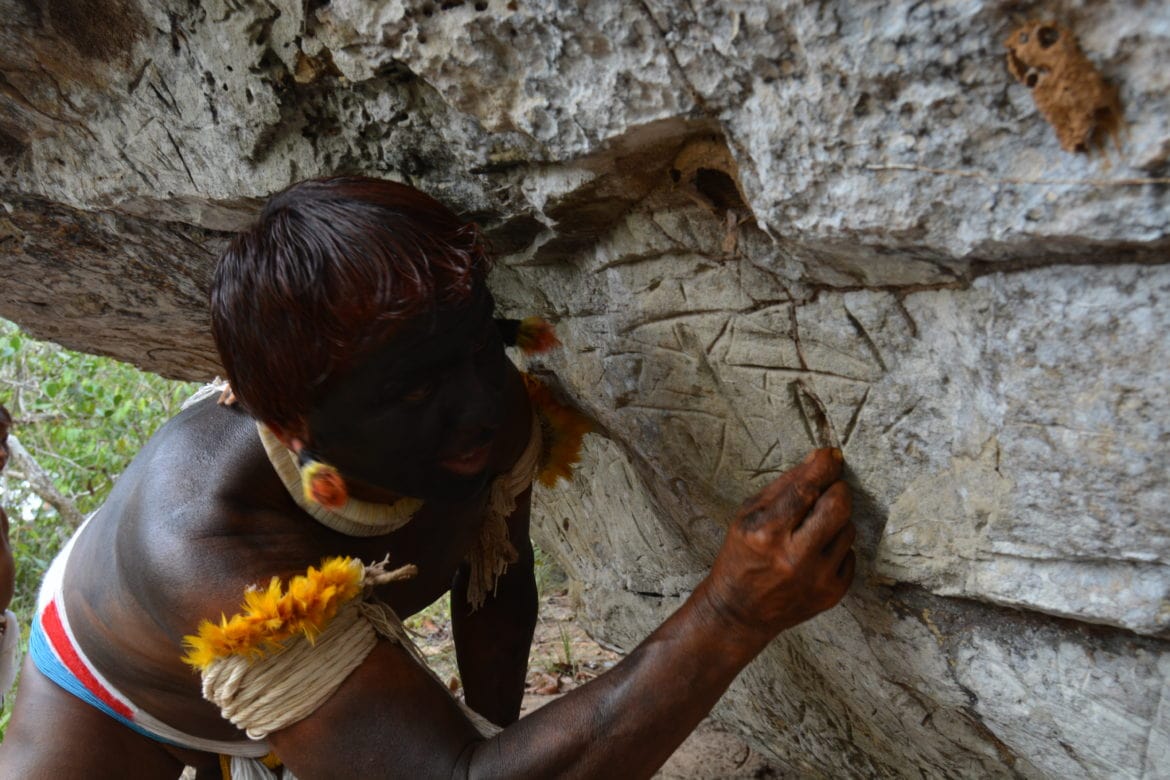
In my memory, the trip to Kamukuaká has since taken on the shape of a journey through hell and into paradise. It was not a romantic Disney-style paradise, nor a Biblical version of heaven. Rather, what I experienced was something I can only describe as the mystery and power of Nature in undiluted form.
The ruthless domination of the natural world in the pursuit of wealth is mapped by our western culture as the road to the future. But the pandemic, and recent riots, have unmasked this way of life. Beneath its glossy surfaces we find corruption of the body and corruption of the soul. This road to the future leads to hell.
Nations are hoping to find deliverance from the economic and social chaos that is sure to follow the pandemic. There will be no miracles, no easy answers; there will be no angel with a flaming sword coming down from on high to show us the way. We have to find our bearing, step by deliberate step, in the darkness that we have created.
And so, we are at a crossroads. What kind of future do we want? Do we follow the rabid visions of those who put themselves at odds with Nature? Or do we retool our societies to make room for other lives, other realities?
Our indigenous partners have traveled this second path, having already survived the disastrous epidemics that our western ancestors first brought to these shores. They patiently tell us, over and over, that we must live with more integrity on this Earth. Only humility will save us, they say. We can follow them – or rather, we can join hands and travel to the future, together.
In February, one of the Kogui elders spoke at a gathering in Colombian Sierra Nevada de Santa Marta. In reference to the pandemic then metastasizing across the globe, he warned:
The spiritual forces that originated nature put knowledge in each being. There is knowledge in the turtle, in the tree, in the stone, in the water… Human beings have to learn from that knowledge. But we have been killing those beings, and by killing them, we kill knowledge.
That is why we know less and less, and that is why we go on to kill ourselves, and it may be that nature ends up killing us all.
KOGUI mAMO OF THE SIERRA NEVADA DE SANTA MARTA, COLOMBIA
I have retraced the rough roads I traveled with the Waurá, over and over in my mind, as I try to understand what I witnessed. Two worlds, two futures. One, the dry, exhausted land being worked to death. The other, a mysterious ancient cave and its river, guarded by eels, infused with vitality. That those two worlds could coincide is so improbable that my only response is to feel a tiny glimmer of hope that we might survive this calamity. That we might choose a brighter future for ourselves and the countless beings with which we share the Earth.
Share this post
Bring awareness to our projects and mission by sharing this post with your friends.


